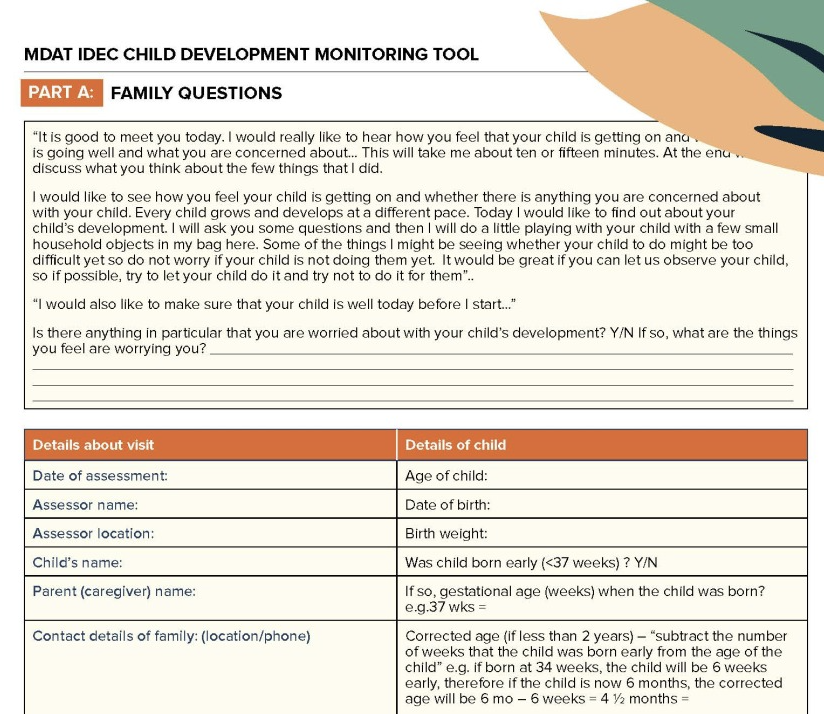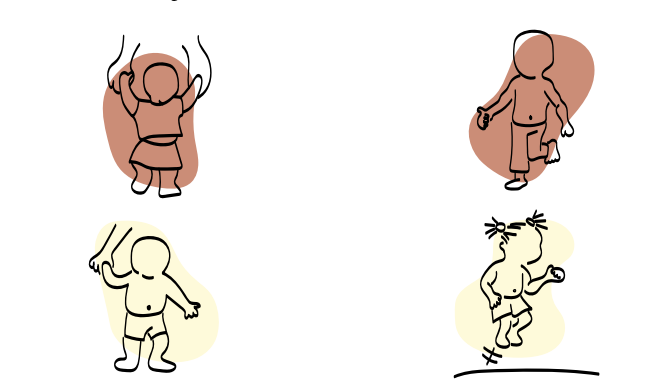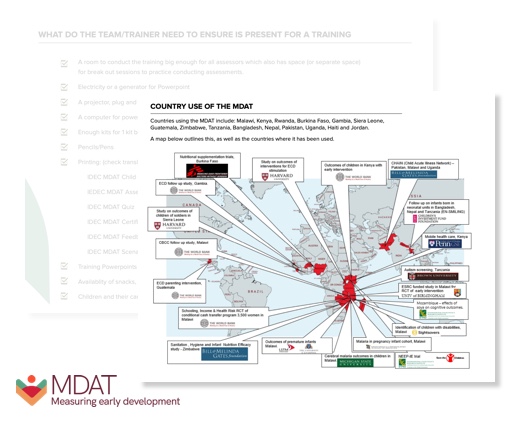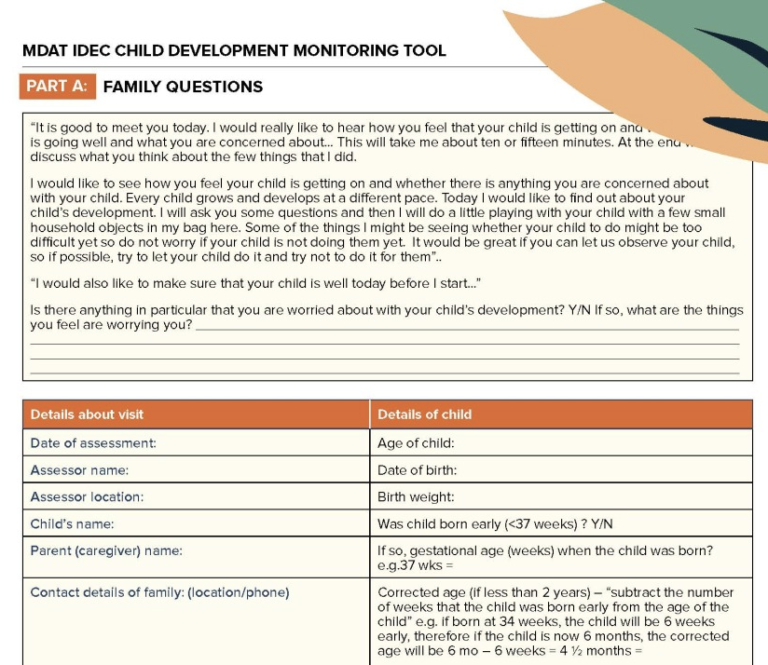
What is MDAT IDEC?
The MDAT IDEC Child Development Monitoring Tool is a simple version of the MDAT, which has been created with data from over 8,000 children from several African countries. Items that are most valid and identify children as having developmental delays at certain ages have been chosen to create a simple tool for workers in the community who may not have much time and experience in using developmental assessment tools. The items in the tool are also the easiest to train on and use the least amount of kit to make it easy to source the kit and keep it as simple as possible. The tool has been validated in Uganda and is presently being used in Lebanon, Nigeria, and Malawi, with more research underway on its diagnostic accuracy and the best implementation of the tool. More information about the original MDAT IDEC project can be found here: https://www.unicef.org/uganda/stories/early-identification-and-interventions-children-developmental-delays-and-disabilities
How is it different from MDAT?
MDAT IDEC has been made as a simpler version of MDAT for those without the time and resources to perform an assessment to measure developmental delays and disabilities in children. MDAT is a full assessment of child development. However, MDAT IDEC is only used for monitoring purposes. It consists of only 52 items, whereas MDAT has 157 items. Due to this reason, it takes around 1-2 days to be trained compared to 5 days for MDAT.
Moreover, IDEC uses fewer kit items (only 10 items in the kit). The domains for MDAT are categorised into fine motor, gross motor, language and social. The MDAT IDEC Developmental Monitoring Tool also includes the 4 monitoring domains for child development, including many cognitive items within the language and fine motor domains. The MDAT IDEC tool also includes items to look for major disabilities. These items include those who identify hearing and vision impairments as well as those who identify children with seizures, spina bifida or spasticity.
More about the monitoring tool & Some detail about PART A- PART D
The MDAT IDEC Developmental Monitoring Tool includes four sections.
- The first section, Part A, is there to ask questions about the child’s health, birth and family history and growth.
- Part B is a section that includes a few questions to identify any major disabilities (hearing, vision, macro or microcephaly, spina bifida, spasticity, epilepsy) which, if identified, should be referred immediately.
- Part C provides 4 developmental milestones per age range across the four domains of child development in the MDAT: Gross Motor, Fine Motor, Social and Language.
If children are identified as failing in any one of these areas, as well as the one in the column for children directly below this age, they should be referred. Part D provides some information for any other family risk factors that might be considered, as well as a plan for referral, which could be adjusted to the local setting.
- The gross motor domain measures the different physical skills of a child; such as sitting, standing, walking, running, kicking a ball.
- The vision and fine motor development in the MDAT measure fine motor skills but also visuomotor skills. Many of the skills (at least 50% of them in the later years) have also been judged by experts to be a measure of cognition (problem-solving). This domain includes vision skills such as; fixing and following to the midline and to 180 degrees (right across from right to left). It also includes motor skills which are done with hands such as; grasping, passing something from one hand to another, pincer grasp, putting things in and out of containers, screwing and unscrewing a lid on a container and building towers and bridges with bricks. Cognitive items include; working out how to get blocks out of a jar, understanding the terms “more” and “heaviest” and “longest” and counting blocks.
- The language domain of the MDAT includes items that look at expressive language (whether the child can say words), receptive language (whether the child understands words), hearing and cognitive skills (50% of the later items in the MDAT in this domain are cognitive).
- The social domain of the MDAT includes items that look at adaptive skills (washing hands, feeding self, going to the toilet) as well as some skills which look at play and interaction as well as responsible behaviour within society.
Training
To be trained in MDAT IDEC, training is required from a trainer who will ensure that one is confident with their training. Further, 10 assessments need to be conducted with someone singly or as a group exercise. We can then provide certification to be an MDAT IDEC Child Monitoring Tool Assessor.
The MDAT IDEC Monitoring tool includes pre-test and post-test quizzes to be completed by the assessors before and after the completion of training. These can be available on the training resources section of our website after the successful signing and return of an MOU.
Use of Malawi Development Assessment Tool (MDAT) in Child Disability Intervention Project in Uganda:
“During a joint disability collaboration forum, UNICEF shared with partners on how it is using MDAT for screening and assessment of children with disability in their early years of life. This triggered a lot of interest from sister UN agencies particularly UNESCO regional office in Nairobi, UNFPA Uganda, Chance for Children-Uganda and Kyaninga Child Development Centre (KCDC) a local- Uganda. UNESCO was motivated to hear that MDAT tool can be used at school level to assess young learners with disability in early stages for corrective interventions.”






